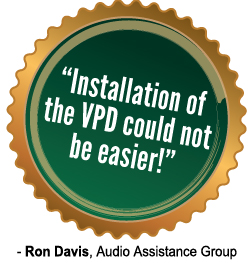Making a home energy efficient these days might start with the speakers, not the thermostat.
In an increasing number of states, builders and developers are being held to tighter requirements governing the air tightness of new construction structures. In an effort to influence building projects to be increasingly energy efficient, builders are having to construct homes that pass more stringent tests. Therefore, any and all wall or ceiling or floor penetrations, including speakers, need to have a sealed barrier in place behind them so there is no air leakage through that wall of ceiling penetration.
This energy conservation requirement is overseen by the International Energy Conservation Code (IECC), which produces a 46-page guide to reducing energy leakage in a home. The IECC code officials have recognized the need for a modern, up-to-date energy conservation code that addresses the design of energy-efficient building envelopes and installation of energy efficient mechanical, lighting and power systems through requirements that emphasize performance.

The IECC code, which was last updated in 2011, has provisions for commercial buildings and for low-rise residential buildings (three stories or less in height above grade.) The broad scope of the code covers all aspects of the construction process, guiding the construction of more energy efficient buildings and structures. Interestingly, the code itself never mentions architectural speakers specifically, but refers to canned lights and other devices that penetrate the drywall and plaster.
One of the challenges of this new code is that while it is a national code in scope, it is reviewed and adopted at the local government level. This means the building requirements will vary depending on the locale of the building, so integrators need to check their local building codes and make sure their installation techniques comply. Compliance to the IECC code standard is determined on a whole-house basis. The test requires hooking up a large blower to the doorway of a home and, in essence, pressurizing it with air and checking the air exchange rate in an air changes per hour (ACH) measurement. A passible rating is a total air leakage rate below 3 to 4 ACH.
Finding Complying Speakers
Some manufacturers make back-boxes for their speakers primarily to reduce sound transfer, especially in MDU applications. But one manufacturer, OEM Systems, a Reno, Nev., anticipated the need for simple, affordable enclosures that seal the back of speaker installations from air leakage. The company’s VPD line of in-ceiling and in-wall speakers offer vapor barriers to meet the IECC requirement for 5 ¼-, 6 ½- and 8-inch ceiling speakers, as well as 9 x 13-inch in-walls.

Oliver Lieder, the company’s chief engineer, says, “OEM Systems developed the VPD-family of products several years ago. Picture marrying a new construction bracket with a dome-shaped back enclosure. Installed at the time of construction, the VPD enclosures attach via metal straps to the joists or studs of the room. The new construction bracket aspect of the VPD guides the sheet rocker to cut the opening in the right place for speaker installation. The end result is a stable, secure speaker mounting, sealed into a injection-molded back dome, that prevents airflow from one side of the wall or ceiling to the other. The speaker has been installed safely and securely… and there is no airflow through the speaker opening area.”
Integrator Ron Davis of Audio Assistance Group in Englewood, Colo., with more than 32 years of experience in custom home audio, says, “Installation of the VPD could not be easier. The metal rails will span up to 24-inch OC joists so you simply screw them to the edge of the joists with four screws. Then, remove the two adjustment screws, slide the Vapor Dome with precision to your desired location, and re-secure with the two adjustment crews. Push your speaker wire through the provided hole and seal with a dab of silicon. That’s it!”
Davis adds that the products also help him reduce installation time, especially in tongue-and-groove ceilings.